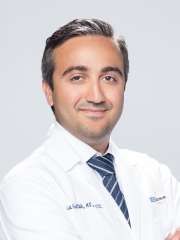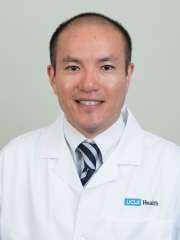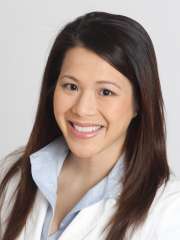High Frequency Oscillation
Find your care
Call 310-825-5111 to learn more about our world-class pediatric neurosurgery services.
High Frequency Oscillation in Pediatric Epilepsy Surgery
UCLA Pediatric Epilepsy Surgery Clinical Trial
Title: High Frequency Oscillation in Pediatric Epilepsy Surgery
Study Team: Joyce Wu, MD; Aria Fallah, MD, MS; Shaun Hussain, MD, MS; Raman Sankar, MD, PhD; Hiroki Nariai, MD, Kristina Murata, RN, MSN, FNP-BC.
Mattel Children’s Hospital at UCLA
Division of Pediatric Neurology
Room 22-474 MDCC
10833 Le Conte Avenue
Los Angeles, CA 90095-1752
What is the purpose of the research? Recently, it has been discovered that we can measure other epileptic activity called high frequency oscillations (HFOs), by recording EEGs at a higher frequency rate. These HFOs on the EEG recordings appear to point out the epileptic brain tissue better than epileptic spikes or seizure onset zones.
During the epilepsy surgery, EEG (brain signals) is measured on the brain to confirm where in your child's brain the epilepsy is coming from. We measure these brain signals with electrodes placed directly on the brain during surgery. We want to look at these EEG signals in an additional new way because we think that we can better localize the area with epilepsy.
In this study we will compare the two groups of patients to see what works best for a seizure-free outcome: surgery based on standard clinical practice only, or surgery based on standard clinical practice and tailored with HFO location. Your child will be randomly assigned to either group. The results of this study may change the way we operate on epilepsy surgery patients in the future.
Regardless of what treatment arm your child is assigned to, there will be no deviation to the current clinical standard of care practice.
To be eligible, study participants must:
- Be between 1-21 years old.
- Have been diagnosed with refractory epilepsy.
- Are being considered for epilepsy surgery to better control seizures/epilepsy (Non-UCLA patients would need to be referred to the UCLA Epilepsy Surgical Program to be considered for the study).
Collaborators

Aria Fallah, MD, MS, MBA
UCLA Mattel Children’s Hospital
University of California Los Angeles
Los Angeles, California, USA
Email: [email protected]

Hiroki Nariai, MD, PhD, MS
Children's Health Center
200 UCLA Medical Plaza
Suite 265
Los Angeles, California 90095
Phone: 310-825-6196

Kristina K. Murata, NP
Developmental Studies Program
300 UCLA Medical Plaza
Suite 3300
Los Angeles, California 90095
Phone: 310-825-6196
For more information, please contact: Kristina Murata, RN, MSN, FNP-BC at 310-206-4037
Protocol ID:IRB#17-000795 UCLA IRB Approved Approval Date: 9/10/2019 Through: 6/26/2020 Committee: Medical IRB 3